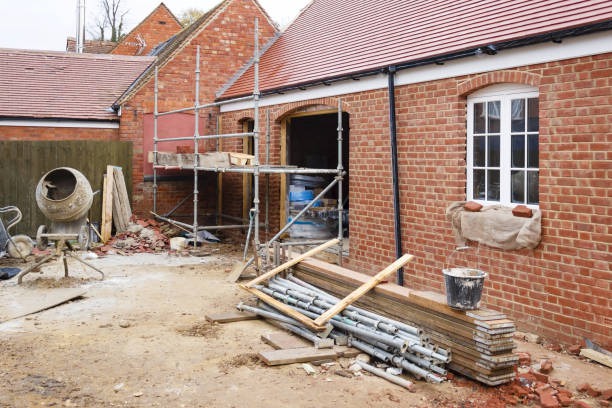Managing timelines and budgets in outdoor construction projects can sometimes feel like a juggling act. You want to ensure everything stays on track without compromising the quality of work or breaking the bank. Whether you’re building a deck, erecting a gazebo, or paving a driveway, the process requires careful planning and execution. In this comprehensive guide, you’ll discover practical tips to keep your outdoor construction projects running smoothly and on budget.
1. Know the Scope of Your Project
Before starting any construction project, it’s essential to have a clear understanding of what needs to be done. This is particularly true for patio construction, where defining the project’s scope and identifying your objectives is crucial. By doing this, you will have a blueprint to guide your efforts and prevent scope creep, which can derail timelines and budgets.
Define Your Objectives
Ask yourself:
-
What do I want to achieve with this project?
-
Are there any specific features or aesthetics I’m targeting?
-
What’s my ultimate goal?
Having the answers to these questions will help clarify your vision. It’s also a stepping stone to developing a working timeline and budget that aligns with your goals.
Map Out Your Process
Once you know what your objectives are, map out the step-by-step process required to achieve them. Break down the project into smaller tasks and determine who is responsible for each. This approach not only provides clarity but also makes it easier to manage unexpected developments along the way.
2. Setting Realistic Timelines
When it comes to timelines, it’s tempting to want everything done yesterday, but that’s usually not realistic. Instead, setting achievable deadlines ensures that work is completed to the highest standard.
Create a Detailed Schedule
-
Develop a detailed timeline with specific milestones.
-
Identify dependencies and prioritize tasks accordingly.
-
Allow for buffer time to address unexpected delays.
A well-structured schedule will help monitor progress and keep everyone accountable.
Regular Check-ins
Establish regular check-in meetings with your team to assess progress. This helps:
-
Identify issues early on.
-
Make necessary adjustments.
-
Keep the team motivated and informed.
3. Budgeting Like a Pro
Budgeting isn’t a one-time task; it’s an ongoing process that requires constant attention. Whether you’re working with outdoor pergola contractors or purchasing materials yourself, having a robust budgeting strategy in place will help you avoid financial setbacks.
Establish a Baseline Budget
Your baseline budget should include:
-
Costs of labor and materials.
-
Permits and licenses.
-
Unforeseen expenses (add a contingency of about 10-15%).
With a baseline in place, you can better track any deviations and address them promptly.
Track Expenses
-
Use budgeting software or spreadsheets to keep track of costs.
-
Regularly update the budget to reflect current expenses.
-
Review financials frequently to ensure you’re staying on track.
4. Choosing the Right Contractors and Suppliers
Selecting the right team can make or break your project. Whether you’re hiring carport builders or sourcing materials, due diligence is critical.
Research and Vet Contractors
-
Look for contractors with a portfolio that aligns with your project type.
-
Check reviews and ask for recommendations.
-
Compare quotes but remember, the cheapest option isn’t always the best.
Build Strong Relationships
Once you’ve selected your team, build strong relationships by:
-
Communicating openly and regularly.
-
Setting clear expectations.
-
Showing appreciation for quality work.
5. Communication is Key
Even the best-laid plans can go awry without effective communication. Keeping everyone in the loop is crucial for the success of your project.
Set Up Communication Channels
Establish multiple channels for communication, whether via email, messaging apps, or face-to-face meetings. Make sure everyone knows how and when to use these avenues.
Provide Regular Updates
Keep stakeholders informed by providing regular updates on project status, costs, and any hurdles you encounter. It fosters trust and provides an opportunity for collaborative problem-solving.
6. Embracing Technology
Incorporating technology into your project management processes can significantly improve efficiency and oversight.
Utilize Project Management Tools
-
Adopt apps or software solutions that offer features like task assignments, timelines, and reporting.
-
Use drones or other technology for site inspections and progress tracking.
By harnessing technology, you can streamline processes, reduce errors, and make data-driven decisions.
7. Mitigating Risks and Managing Changes
Every construction project has its own risks. It is vital to identify these upfront and have a plan to address them.
Conduct a Risk Assessment
-
Identify potential risks such as weather delays or supply chain issues.
-
Develop mitigation strategies to minimize their impact.
Have a Change Management Plan
Changes are inevitable. Whether they stem from design adjustments, budget shifts, or timeline extensions, having a comprehensive change management plan in place is crucial. Ensure that any changes are documented and communicated to avoid misunderstandings.
Final Thoughts
Outdoor construction projects, whether big or small, require meticulous planning and execution. By understanding the scope of your project, setting realistic timelines, mastering the art of budgeting, and choosing the right team, you can easily manage timelines and budgets effectively. Remember, communication and relationship-building are your secret weapons in ensuring success. With these strategies in your toolbox, you’re well-equipped to take on any project with confidence and precision.

